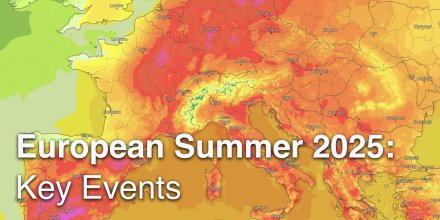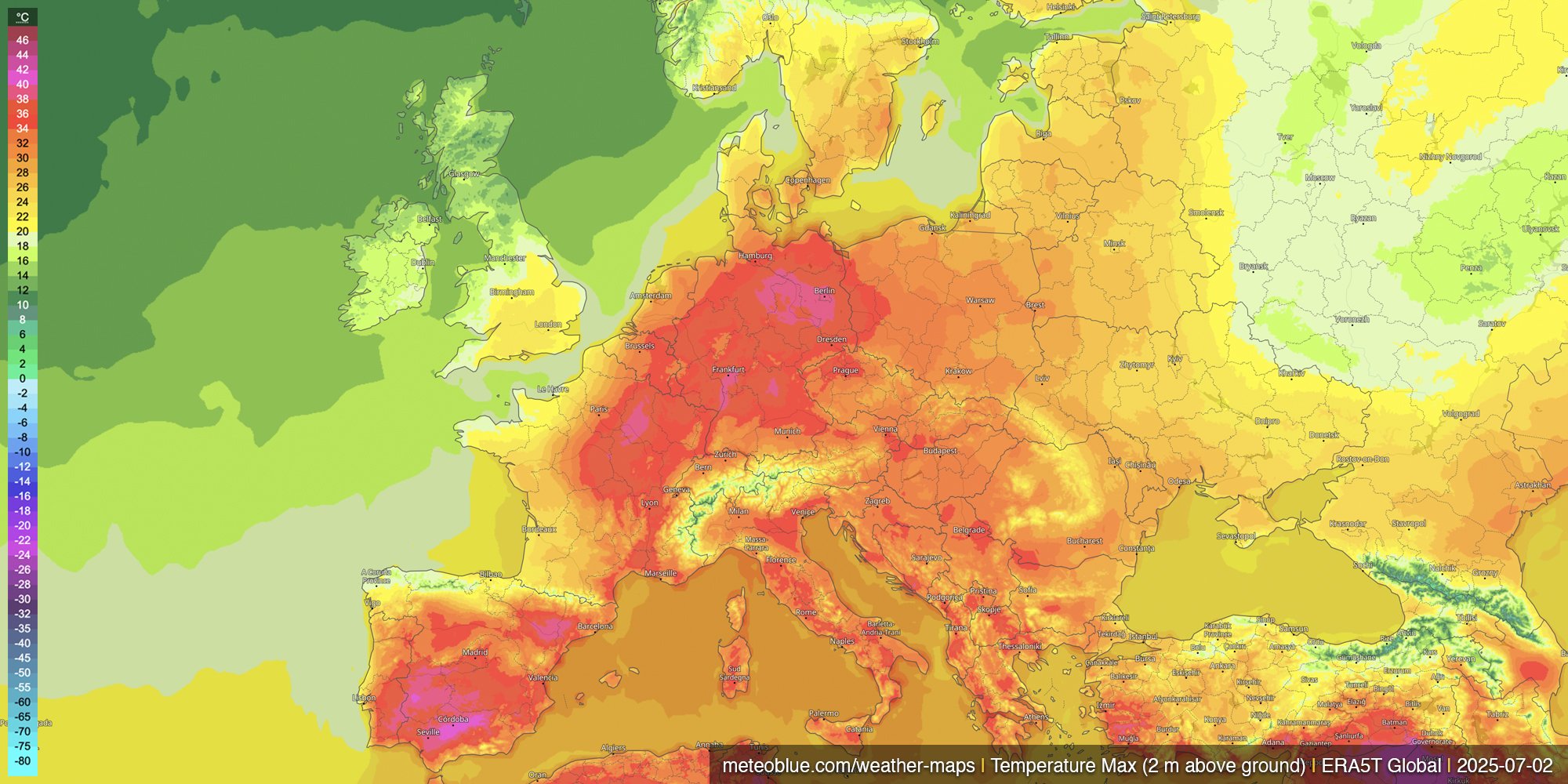Meteorological summer, defined as the period from June through August, has now ended, while astronomical summer continues until the autumnal equinox later in September. This distinction is important, since meteorological seasons are based on the annual temperature cycle and provide a consistent framework for climate monitoring, while astronomical seasons are linked to the Earth’s position relative to the Sun. With the meteorological summer now behind us, it is time to reflect on the weather and climate extremes that shaped Europe in 2025.
The summer began with an early start of heatwaves in late June, when southern Spain, Italy, and Greece recorded temperatures above 40°C. By July, a strong and persistent heat dome had settled over the Mediterranean basin, intensifying the heat. Spain endured repeated highs of 44–45°C and Italy saw new records in Rome and Florence exceeding 41°C. In August, the high-pressure ridge shifted northwards, bringing unusually hot conditions to central and northern Europe. Germany, Poland, and the Benelux countries experienced maximum temperatures of 35–38°C, while Scandinavia, typically much cooler, recorded 30–32°C. The combination of record-breaking daytime heat and unusually warm nights – when temperatures stayed above 20°C – put serious pressure on people’s health, energy systems, and infrastructure.
Map showing maximum temperatures across Europe exceeding 40°C in some areas.
The persistent heat created ideal conditions for wildfires. By late August, the European Forest Fire Information System (EFFIS) reported that more than one million hectares had burned across the European Union, almost five times the area affected during the same period in 2024 and well above the long-term average. The Iberian Peninsula, Greece, Italy, Türkiye and the Balkans were among the hardest hit, where prolonged drought and strong winds fuelled large-scale fires. The smoke plumes from these fires degraded air quality locally and were also transported across borders, adding to Europe’s summer haze.
Closely linked to this, 2025 also brought a particularly active season of Saharan dust transport. The Copernicus Atmosphere Monitoring Service (CAMS) tracked several episodes of long-range dust intrusions over the Atlantic and into Europe in the first half of the year as well as in summer. Repeated atmospheric dust events affected the Mediterranean, especially Spain, Italy, and Greece, in some cases major plumes reached as far north as France, the Benelux, the United Kingdom and Germany, which often resulted in hazy skies, visible dust deposition, and significantly elevated PM₁₀ (particulate matter with a diameter of 10 micrometres or less) concentrations at the surface. It is important to note that dust storms affect more than just air quality and health, they also influence sunlight, cloud formation, and even the climate system itself.
Left: Dust accumulation over France tinting the sky yellow; Right: Car speckled with fallen dust.
Furthermore, Europe felt the impact of Atlantic storms. In early August, Storm Floris swept across the northern UK and Ireland with gusts exceeding 85 mph, leading to widespread power outages and transport disruptions. Later that month, Hurricane Erin approached the continent. Though it weakened before reaching land, its interaction with subsequent low-pressure systems set off a prolonged period of unsettled weather that persisted well into September.
Left: Storm Floris near the coast of Scotland; Right: Hurricane Erin approaching Europe after extratropical transition.
The varied extremes of summer 2025 – from heat to storms – show us why ongoing monitoring and clear communication remain essential for understanding and managing weather and climate risks.





